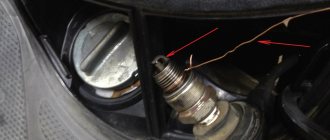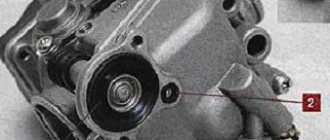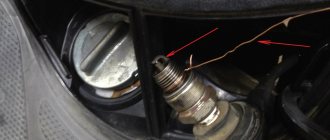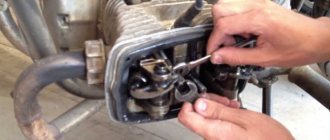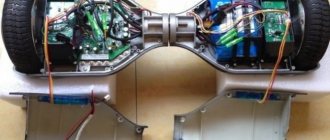Scooters today are relevant, popular and practical vehicles. People of various age categories can successfully move on them. For most owners, a scooter is their only means of transportation. Other owners use this technique as entertainment. During the operation of Chinese and Japanese mopeds, various malfunctions may occur. One of the common problems that many have encountered is the lack of spark on the scooter. Let's consider possible causes and ways to eliminate this problem.
Often the spark disappears at the most inopportune moment, and the driver is saddened by the stalled engine. Owners of Chinese equipment especially often face this problem.
General diagnostics
If the moped engine stalls, you should first find out why this happened. Indeed, among the main reasons why an engine stalls on the road or refuses to start, only two are the lack of fuel or the inability to ignite the mixture. Often, during the first diagnosis, it turns out that there is gasoline in the tank, and the fuel mixture is supplied to the cylinders due to vacuum. And therefore, the reason for everything is that the spark on the scooter disappeared. To verify this, you simply need to unscrew the spark plug from its standard hole in the cylinder head. Then it is inserted into the cap, its end is applied to the motor body.
Next, start the engine and look at the electrodes. You should also check the element not only for the presence of a spark, but also for the condition of the electrodes. The candle can be dry or wet. If the electrode is wet, then the fault is not the power system and carburetor, but the lack of a spark. If there is no spark on a 4T scooter, the reasons may be different. We will look at the most likely ones below.
What to do if there is no spark on the scooter?
Your scooter's engine suddenly stops, what should you do? Don't rush to panic. First, check if there is gasoline in the tank. If the reason is not due to running out of fuel, the problem must be looked for in the ignition system. The first thing that comes to mind is that the spark plug has gone bad. In this case, it is recommended to have a working candle in stock.
By the way, you can determine the condition of a candle by its appearance. A normal candle has no external changes. Minor electrode erosion and small deposits are acceptable on its surface. If you see the formation of dry black carbon deposits on the spark plug elements, it means that carbon contamination has occurred as a result of an overly enriched fuel mixture. The spark plug should be cleaned or replaced, and the working mixture adjusted. The air filter will also need to be replaced.
Overheating can result in melted electrodes and bubble formations on the insulator. Using such a spark plug can cause serious damage to the engine.
Another cause of spark plug malfunction can be oil contamination. The appearance of such a candle is clearly visible in the photograph. Typically this occurs in two-stroke engines. These spark plugs need to be replaced.
Spark plug condition
So, install a spare spark plug and start the engine. Did it work? Great! But if there is no spark on the scooter, but the spark plug is working, most likely the problem is in the ignition system itself. Therefore, we will have to look further for the reason.
The simplest and most accessible reason for self-repair may be lack of contact. In order to find out, we check the connection points of the terminals and the integrity of the wires.
Then we begin to study the electrical circuit: electric current flows from the generator to the switch, accumulating in the capacitor. The latter transmits a signal to the ignition coil, where the voltage increases several thousand times and, traveling along a high-voltage wire, enters the spark plug, bypassing the cap. Be careful not to touch your finger to the area where the spark should come from - this is a high voltage area.
A wire is pulled from the electromagnetic sensor in the engine or from the switch to the ignition switch to turn off the engine. When the engine is turned off, the wire shorts to ground and the spark goes out. To check whether this is the reason for the lack of a spark, you should find two contacts on the ignition coil: ground “-” and on the switch “+” (do not confuse it with a high-voltage wire!). The contact going to the commutator is disconnected, after which the resistance between the ground and the coil contact is checked, and then between the ground and the commutator.
Scooter engine
During normal operation, there should be a lot of resistance in both cases. If the resistance on the coil is insufficient, it needs to be replaced, and if the resistance on the wire is low, most likely the reason is in the switch.
If the above steps do not reveal any defects, most likely the problem is in the electromagnetic sensor or generator. These items are checked depending on the scooter model.
If, when checking, all of the listed elements operate normally, the switch is most likely faulty. To check its operation, you will have to go to a workshop, since this is impossible to do in a garage.
To carry out the above steps, you will need a multimeter with resistance measurement mode. Judging by the description, all this is very simple, but what to do if there is no spark in the scooter, and you have never seen a switch, a generator, or a coil, and you don’t have the slightest idea about them?
Faulty spark plug
This is the simplest reason why there is no spark at the electrodes. Such a nuisance often happens due to the quality of the fuel, as well as due to the presence of various harmful impurities in domestic gasoline. Because of this, many owners of Chinese equipment lost spark on their 4T (4 stroke) scooters. How to check its availability?
To make sure that the spark plug has failed, you need to install a new or exactly serviceable part in its place. But there are times when a new one is not available and there is nowhere to purchase it. Then a nail or a piece of wire will help. It is necessary to select devices whose diameter will be sufficient so that the wire or nail does not fall out of the cap. The element must be inserted into the spark plug cap, and then it is brought to the engine housing. The approximate distance from the nail to the crankcase should be 7 millimeters.
Next, the starter turns the crankshaft. If the scooter's electrical wiring is completely intact, a white spark will appear between the nail and the metal body of the motor. This means that the ignition system is operating normally, and it is worth replacing the spark plug. You can try to clean it of carbon deposits. This way it will work again. But most beginners do it wrong. After such cleanings, if the spark returns, it is for a very short period of time.
Checking the crankshaft sensor
On most vehicles, a faulty PDAC will usually cause a trouble code, so use a diagnostic scanner. Or check the crankshaft sensor itself.
Magnetic DPKV
Crankshaft magnetic sensors can be tested by disconnecting the electrical connector and measuring the resistance between the corresponding terminals. If the resistance is not within specifications, the sensor is faulty and must be replaced.
Magnetic crankshaft position sensors produce alternating current when the engine is started, so checking the output voltage is another test that can be performed.
With the sensor connected, measure the output voltage at the sensor terminals when the engine starts. If you see at least 20 mV on AC, the sensor is good and there is probably a problem with the module.
If the output voltage is low, remove the sensor and inspect the end for rust or debris (magnetic sensors will attract metal particles). Clean the sensor, reinstall it and test again.
Make sure it has the proper air gap (if adjustable) as the distance between the end of the sensor and the ring gear or notches in the crankshaft will affect the sensor's voltage output. If the air gap is correct and the output voltage is still low, replace the sensor.
DPKV on the Hall effect
Hall effect crankshaft position sensors typically have three terminals. One is for current supply, one is for grounding and one is for output signal. The sensor must have voltage and ground to produce a signal, so check these terminals first with a multimeter.
Source: autorepairhelp.us
The sensor output can be checked by disconnecting the DIS module and cranking the engine to ensure that the sensor is producing a voltage signal. The voltmeter voltage should change each time a prong passes in front of the sensor. When observed on an oscilloscope, you should see a square wave shape. The absence of a signal indicates that the sensor is faulty.
Source
Cleaning the elements correctly
Every owner of motorcycle and automobile equipment should know how to properly clean spark plugs from carbon deposits. Most beginners try to restore parts themselves and then wonder why they don't work.
The main mistake is that the spark escapes to the spark plug body along the soot - it is not a conductor of electricity. The engine cannot be started. Plaque forms not only on the electrodes, but also on the ceramic insulator. Therefore, it is necessary to clean not only the side and central electrodes, but also the insulator.
A better effect can be achieved if you use a sandblaster. If there is none, you can try cleaning with just sand. To do this, you should purchase an electric drill and sand in a bucket. Next, take the candle and clamp it in the drill chuck by the thread on the top. Large threads are wrapped with tape. The part is then lowered into the bucket and the tool is started. After some time, the electrodes and insulator will be cleaned. If the spark is lost for this reason, the scooter spark plug will work properly again.
Why is there no spark on my scooter?
There are different types of scooter breakdowns, and if you notice that it simply won’t start, you should start looking at the fault in the most common parts. One of these is the spark plug.
The spark plug is the main source from which any vehicle runs and so if you see that your scooter has gas but is still broken, check the spark plug. In any case, you should carry tools with you. Also, be sure to stock up on an extra spark plug so that if the main one breaks, you can immediately replace it. But how can you determine the condition of such an important scooter part?
Check by appearance
A serviceable part must be clean. Only slight soot on it is allowed. However, if the electrodes are melted or black, then the spark will not occur. Spark plugs deteriorate if the fuel mixture is too rich. If the insulator is white, but there are small black spots on it and signs of erosion on the electrode, this indicates overheating. This is also evidenced by melted electrodes and insulator in bubbles. If there are oil deposits on the part, it can be considered faulty and it is better to replace it with a new one. This simple DIY scooter repair will help you use this vehicle again.
Condition of the spark plug and its malfunction
The simplest way is external verification. If it has a normal color and looks natural, the part is most likely working. Signs of use such as erosion and sediment from long-term use are acceptable. When a vehicle's fuel mixture becomes too rich, the result affects not only the engine, but primarily the spark plug itself. Thus, black dry deposits appear in some areas. , as well as replacing the air filter, will help correct the situation Do not use a dirty or damaged spark plug, otherwise the engine will not operate properly and will soon need repairs. This is one of the reasons that answers the question of why there is no spark on the scooter ?
Breaks in the spark plug cap
This reason can also be considered simple. If there is no spark on the scooter, you should remove the cap and then check its resistance level. After disconnecting the cap from the wire, take measurements. The multimeter probe is inserted into the spark plug hole. The other is attached to the pin that the wires go to. If the cap is working properly, the multimeter will show about 5 kOhm. On most modern scooters, the high-voltage wires, spark plug cap and ignition coil are made one-piece.
All these parts are filled with rubber or compound. Therefore, you can test the cap, wire and ignition coil as a whole. One of the probes of the device is inserted into the spark plug hole on the cap. The second is connected to the ignition coil. This is how the resistance on the primary and secondary windings and the high-voltage wire itself are revealed. The reading on the primary winding should be between 0.1 ohm and 0.4 ohm.
Secondary resistance ranges from 6.35 ohms to 9.7 ohms on most scooters. Sometimes a high-voltage wire becomes unusable. To replace it, you need a cable with a metal core. A car part with carbon filler is not suitable for this procedure.
No spark on the scooter - causes and solutions
There is no spark on the scooter or it disappears at the most inopportune moment, saddening the driver with a stalled engine. Not a common, but quite possible malfunction, especially on Chinese scooters. In this article, more aimed at beginners, we will look in detail at the reasons for the loss of spark and consider methods for eliminating this malfunction (return the spark).
When your scooter's engine stalls, you should first find out why it stalled. After all, there are only two main reasons why the engine stalls somewhere along the way, or does not start at all: either there is nothing to burn in the combustion chamber of a scooter engine (no fuel is supplied), or there is nothing to ignite (no spark).
I hope that everything is in order with the power system of your scooter, there is gasoline in the tank and fuel enters the combustion chamber due to the discharge from the piston (this is the topic of a separate article, but in this article we are looking at the lack of a spark). And the reason that the engine stalled is precisely because there is no spark on the scooter.
It is, of course, very easy to verify this, just unscrew the spark plug from the spark plug hole in the head and insert the spark plug into the spark plug cap, all that remains is to attach the spark plug body to the engine body, pull the kickstarter and look at the electrodes.
By the way, I advise you to pay attention to the spark plug electrodes not only for the presence or absence of a spark, but also whether the electrodes are wet or dry. If the electrodes are wet, this means that most likely everything is in order with the power system (carburetor) of your scooter and the motor has stalled (or will not start) precisely because of the lack of a spark at the spark plug electrodes.
If there is no spark, there may be several reasons and specific reasons will be described below. And let's start looking at the simplest ones and move on to more complex reasons for the lack of spark. Well, of course, it will be described how to troubleshoot and return the spark.
There is no spark on the scooter - reasons and methods for doing it yourself.
1. The first and most common reason for the lack of a spark at the spark plug electrodes is the failure of the spark plug itself. This happens often, since our gasoline, to put it mildly, is not very good in quality and due to the presence of all sorts of nasty things in gasoline, the spark plugs often fail.
You can verify that the spark plug is to blame for the lack of spark by replacing it with a new or known good spark plug. But if suddenly you do not have a new spark plug at the moment, then you can check the normal operation of the ignition system using a regular piece of wire or a nail of suitable diameter (so that it fits into the hole of the cap and does not fall out).
It is inserted into the hole of the spark plug cap, then a wire pin or nail inserted into the cap is brought to the engine crankcase at a distance of approximately 5 - 7 mm and then we crank the engine crankshaft using the kickstarter. A spark jumping between the pin and the engine crankcase (ground) will confirm that the ignition system itself is in perfect order and there is no spark on the scooter just because of a faulty spark plug.
By the way, the spark plug can be cleaned and brought back to life (at least to get a new spark plug to the auto parts store). But many beginners do not clean the spark plugs correctly, and as a result, if a spark appears on the spark plug after improper cleaning, it does not last long.
2. The next common reason for the lack of a spark is a break in the wire (or oxidation of its terminal) that connects the engine to the frame (after all, the motor hangs on silent blocks and must be connected to the frame). This means that after checking the spark plug, we check the integrity of this wire and the reliability (cleanliness) of connecting the terminal to the motor and the frame of the scooter.
3. Another simple reason for the lack of a spark is a break (burnout) in the high-voltage cap of the noise suppression resistor. We remove it from the spark plug and test it with a tester turned on in resistance measurement mode (ohmmeter).
We disconnect the cap from the wire and insert the probe into the hole for the spark plug, and connect the second probe to a sharp pin (the one on which the wire is put) or to the wire, and measure the resistance. A working cap with a intact resistor should have a resistance of 5 kilo-ohms.
On modern scooters (unlike older mopeds), the high-voltage wire, cap and ignition coil are integral parts, as they are filled with rubber or compound. This means you should check the cap, wire and coil at the same time.
To do this, we again insert one ohmmeter probe into the hole in the cap intended for the spark plug, and alternately connect the second probe to the ignition coil terminals to determine the resistance of the primary and secondary windings, along with the cap and the high-voltage wire.
The resistance of the primary winding of the ignition coil (we check by connecting the probes to the coil terminals as in the photo) is approximately from 0.1 to 0.4 Ohms (for example, on a Honda Dio it is 0.2 - 0.3 Ohms).
Well, we check the resistance of the secondary winding of the ignition coil (we connect one probe to one of the coil terminals - green - see photo below), and the second probe to the hole for the spark plug in the cap) is 6.35 - 9.7 kOhm on most mopeds , but you can check the manual of your scooter (Honda Dio has approximately 8.2 - 9.3 kOhm). This is the total resistance of both the secondary winding of the ignition coil and the resistor in the cap (after all, the resistance of the noise suppression resistor is 5 kOhm).
Without the spark plug cap (if it is removed), the resistance of the secondary winding of the ignition coil will be approximately 2.7 - 3.4 kOhm. Well, if the ohmmeter shows infinity (break), then of course we replace the ignition coil with a new one, but do not forget that the resistor in the cap can also burn out, so to make sure that the ignition coil is correct, I advise you to measure the resistance of the secondary winding without the spark plug cap.
4. Another simple reason that there is no spark on the scooter is a break in some wire in the ignition system, disconnection of some terminal (rarely, but it happens), but most often it is oxidation of the contacts (terminals) of the wires coming to the system components ignition and, as a result, loss of contact and lack of spark (or there is a spark, or there is not). When the contacts oxidize, a transition resistance occurs at the terminals and, because of this, insufficient voltage.
This is interesting: A plastic bottle on the wheel of your car is a safety hazard
The fault can be fixed quite simply - we remove the plastic of the scooter and then check all the wires (their integrity and insulation from ground), which are marked with the letters A, B, C, D on the electrical diagram on the left, as well as the terminals of these wires coming to the components of the ignition system (switch , ignition coil, pulse sensor (Hall sensor)).
If the terminals are oxidized or do not hold tightly, then of course we clean them until they shine and tighten them. We especially pay attention to the cleanliness and reliability of the connection to the frame from the ground terminal from the green wire D of the ignition coil. And if other terminals have reliable terminals with latches, then this terminal often oxidizes on the frame and this causes the coil to stop working (of course, the spark disappears).
We also check the wire going from the switch to the frame (as a rule, it is green), the reliability of its connection and the cleanliness of its terminal, which is connected to the frame of the scooter.
5. Well, there may also be a reason for the loss of the spark, this is due to the failure of some component of the ignition system (coil, switch, sensor, and sometimes the generator winding - it’s rare, but sometimes they fail). You can check the integrity of the pulse sensor and the integrity of the winding of the generator supply coil with a multimeter turned on in resistance measurement mode (ohmmeter).
As a rule, two wires come out of the engine crankcase in the area of the generator. Usually the one that is black with a red stripe is the wire from the pulse sensor, and the wire of the other color (usually blue with a white stripe) is the wire from the generator supply winding.
So, to ensure the integrity of the winding, both the pulse sensor and the generator winding, you should connect one ohmmeter probe to the sensor wire (red-black), and connect the second probe to the engine crankcase (we also connect one probe to the generator winding wire, and the second to the crankcase to check the integrity of the generator winding).
The resistance of the pulse sensor may differ slightly for different scooters - it is approximately 500 Ohms (the exact value can be found in the manual), but the main thing to remember is that the resistance of the pulse sensor is approximately two to three times greater than that of the generator winding (the resistance of the generator winding is approximately 150 - 200 Ohm). If, when measuring the resistance (both of the sensor and the generator winding), the ohmmeter shows a break (infinity), which is rare, but still, then of course the generator winding should be replaced, or the pulse sensor and the spark will be restored.
The switch is easy to find even for a beginner. It is a small plastic rectangular box that has a terminal block (connector), to which five or six wires of different colors are connected through a terminal block with a latch.
The switch itself controls the ignition system of a modern scooter. On some scooters (for example, Italian, or on the Japanese Suzuki Sepia scooter), the switch and ignition coil are located in the same unit, but on most scooters the switch and coil are separate components of the ignition system.
Both the switch and the ignition coil are non-separable (filled with compound) and when they fail, they are simply replaced with new ones and are not expensive. The main element of an electronic switch (in addition to other radio components) is a thyristor, which switches (interrupts) the electric current.
The thyristor has three terminals, and when a current pulse arrives from the sensor at one of the terminals, the thyristor connects the other two terminals (becomes a conductor), opening the path for electric current through the capacitor (more about it below) to the primary winding of the ignition coil.
As the voltage drops to a certain value, the thyristor interrupts the current until the next time. Simply put, a thyristor is an electronic interrupter of the current flowing to the ignition coil.
After a full revolution of the scooter’s crankshaft, the protrusion on the crankshaft again approaches the sensor, which again gives a voltage pulse to one of the three terminals of the thyristor and everything repeats again.
Another important element of the scooter switch is the capacitor, which accumulates electricity. energy, which, after commutation (connection) of its two terminals by the thyristor, is sent to the primary winding of the ignition coil.
And then the voltage in the coil is increased to several kilovolts in the secondary winding of the ignition coil, and through a high-voltage wire and a spark plug cap, the discharge is supplied to the electrodes of the spark plug, between which a discharge (spark) occurs, which ignites the combustible mixture in the combustion chamber of the scooter engine.
To explain it in a shorter and simpler way for beginners, we can say this: the voltage flows through the wires from the scooter generator 7 (see the wiring diagram above) to the switch 2 and accumulates in the capacitor, which is located inside the switch. When the protrusion on the crankshaft approaches sensor 8 and the signal from it, the capacitor is discharged into the primary winding of the ignition coil in a split second.
And then in the secondary winding of the ignition coil, the voltage rises to several kilovolts and is discharged through a high-voltage wire to the spark plug electrodes. In general, the entire process of spark formation in the ignition system occurs in a split second.
In order to turn off the engine, a separate wire (usually black) comes from the switch, which goes to ignition switch 1 (see wiring diagram above), and when the ignition key is turned to the off position, this wire shorts to ground, the spark disappears and the engine stalls.
And if everything has been checked as described above, but there is still no spark on the scooter, then I advise you to remove the front trim and check whether the black wire has come off and whether it is shorting to ground (frame). The likelihood of this is very low, but still.
By the way, you can check the normal operation of the jammer (and make sure that everything is in order and this is not the problem) without removing the plastic. To do this, disconnect the terminal block from the switch and locate the terminal connected to the black wire that goes from the switch to the ignition switch. We connect one ohmmeter probe to the terminal of this black wire, and the second probe to the scooter frame.
When the ignition key is turned off, the ohmmeter should show zero, and when the key is turned to the on (start) position, the ohmmeter should show infinity.
If the spark plug, sensor, generator winding, wires and terminals described above, the ignition coil are checked, but there is no spark, then to make sure that the problem is in the switch, simply replace it with a new one (I advise you to buy a spare one and carry it with you). Since it is impossible to check the serviceability of the switch at home.
Some reputable services have electronic devices that can check the serviceability of the switch, but in order not to bother searching for a service, it is much easier to buy a new one to check that it is the reason for the lack of spark. In addition, a spare switch will give you confidence on the road that you will return home under your own power.
And finally, a couple of useful tips.
When something on your elderly scooter starts to fall off (most often in Chinese) and you need to fix something, remember the advice on how not to damage the ignition system, and indeed the electrical equipment of your scooter. When welding (even if you just need to drip a small tack with electric welding), I strongly advise you to disconnect the terminal block of the voltage stabilizer and the switch block from the electrical circuit of the scooter and put these devices on a shelf. Otherwise, the electronics of these devices will simply burn out.
I also recommend connecting the alligator clamp from the welding machine to the welding site as close as possible. Otherwise, the huge welding current will follow the path of least resistance - that is, along the wire connecting the engine of your scooter and the frame (after all, the motor hangs on silent blocks). What happens next can be called a smoke attack in your garage - that is, the wire will instantly melt under the load of a huge welding current.
If it is not possible to connect the ground of the welding machine close to the welding site, then I advise you to disconnect all the ground wires on your scooter.
That seems to be all. I hope this article will help beginners find and eliminate the reason why there is no spark on the scooter, good luck to everyone!
Breaks in electrical wiring
This happens very often, especially on Chinese-made scooters. Here, wire breaks in the ignition system are possible.
The reason may also be oxidized contacts and terminals. Do-it-yourself scooter repair, in this case, consists of checking the integrity of all wires in the ignition system. Also pay attention to the terminals. If the contacts are oxidized or do not hold tightly, then they should be cleaned and tightened. It would be a good idea to check the wire that comes from the switch. You need to make sure the connection is secure and the terminal is clean.
Failure of ignition system components
This is not a common reason. But if the spark on the scooter disappears and there are no visible reasons, then it is necessary to test the switch, coil, and generator winding. You can check all these devices with the same multimeter. To make sure that the winding and pulse sensor are working properly, you need to connect one tester probe to the wire from the sensor, and the second to the engine crankcase.
A normally operating pulse sensor has a resistance of about 500 ohms. The generator winding resistance is two to three times less. If the multimeter shows infinity, then one of the components has failed. It should be replaced with a new one. If the value is less than 150-200 ohms, then the problem is in the supply coil, and therefore the spark is lost on the scooter. What to do in this situation? Buy a new generator. Such a device can be repaired, but if there is no time, it is better to simply replace it. Fortunately, the cost of the generator is low.
Electrics and electrical equipment of a scooter
Dedicated to all owners of Chinese scooters...
To begin with, I would like to present a wiring diagram for a Chinese scooter.
Since all Chinese scooters are very similar, like Siamese twins, their electrical circuits are practically no different.
The diagram was found on the Internet and is, in my opinion, one of the most successful, since it shows the color of the connecting conductors. This greatly simplifies the diagram and makes it more comfortable to read.
(Click on the image to enlarge. The image will open in a new window).
It is worth noting that in the electrical circuit of a scooter, just like in any electronic circuit, there is a common wire . On a scooter, the common wire is the minus ( - ). In the diagram, the common wire is shown in green . If you look more closely, you will notice that it is connected to all the electrical equipment of the scooter: headlight ( 16 ), turn relay ( 24 ), instrument panel backlight lamp ( 15 ), indicator lamps ( 20 , 36 , 22 , 17 ), tachometer ( 18 ), fuel level sensor ( 14 ), horn ( 31 ), tail light/brake light ( 13 ), start relay ( 10 ) and other devices.
First, let's go over the main elements of the Chinese scooter circuit.
Egnition lock.
Ignition switch ( 12 ) or “Main switch”. The ignition switch is nothing more than a regular multi-position switch. Even though the ignition switch has 3 positions, the electrical circuit uses only 2.
When the key is in the first position, the red and black wires are connected. In this case, the voltage from the battery enters the electric circuit of the scooter, the scooter is ready to start. The fuel level indicator, tachometer, sound signal, turn relay, and ignition circuit are also ready for operation. They are supplied with power from the battery.
If the ignition switch malfunctions, it can be safely replaced with some kind of switch like a toggle switch. The toggle switch must be powerful enough, because the entire electrical circuit of the scooter is, in fact, switched through the ignition switch. Of course, you can do without a toggle switch if you limit yourself to short-circuiting the red and black wires, as the heroes of Hollywood action films once did
.
1 is shorted to the housing (common wire). In this case, engine operation is blocked . Some scooter models have an engine stop button ( 27 ) to block the engine, which, like the ignition switch, connects the white- black and green (common, body) wires.
The generator ( 4 ) produces alternating electric current to power all current consumers and charge the battery ( 6 ).
There are 5 wires coming from the generator. One of them is connected to a common wire (frame). The alternating voltage is removed from the white wire and supplied to the relay regulator for subsequent straightening and stabilization. The yellow wire removes voltage, which is used to power the low/high beam lamp, which is installed in the front fairing of the scooter.
Switch
Even a beginner will find its location. This is a plastic box with a terminal block. Multi-colored wires are connected to it. The switch is necessary to control the operation of the ignition system. Both the switch and the ignition coil are made non-separable. If the element fails, then the problems can only be solved by replacement. The price of these parts is low - up to 500 rubles. Some service stations have special instruments that allow you to test the switch. However, in order to avoid searching for the appropriate services for a long time, the easiest way is to purchase a new switch. In the process of searching for the reason for the failure of the switch, you do not need to listen to “experts” who claim that the failure occurred due to driving without a battery. This is an unreliable opinion. The fact is that in modern scooters the power supply system and the ignition system do not depend on each other in any way.
Comments
Ahi Muslim:
My scooter has a weak spark, I can't find the reason
With Your Own Hands:
wow, it’s easy for me to have a switch just like the carb
Vika Chernenko:
the sound is shit can't hear shit
Alexey Tolstikov:
I called everything about it, I pulled the spark plug 2-3 times, there was a spark, I screwed in the spark plug again, I pulled the kick, first it caught something and then there was silence, I pulled the spark plug out again, the spark was barely visible, the Chinese was half a centimeter 4x. What to do help.
Vanches201:
thank you dude, it helped a lot, I also had a problem, it was hard to start, the problem was in the switch on the tray, the switch itself went sour and drizzled, the so-called “floating error”.
Mikola Petrov:
you shit in your pants
Victor Zamkov:
Please tell me I have a 49cc Gilera moped, there is no spark, could it be a problem with the regulator or a problem with the camutator? I contacted one specialist, he says that the snout regulator has no relationship with the camutator. Is this true? The generator is new!
Chingiz Kapasov:
Could the scooter not pick up speed because of the switch?
Victor Matonin:
And if it shows not 60 volts but 30 volts, does that mean the hone coils? I have a spark but it's weak and won't start.
NoNAME BPAN:
I have an Orion 100 moped, I changed the engine to a larger one, the cubator won’t start, there is a weak spark, what should I do?
msha garbachev:
Hello! I have the same scooter as you have in the video. There is no blue wire on the four-pin pin, but green, red-white and black-yellow. None of them have 160 ohm resistance. The problem is that the spark is weak and the scooter will not start. Help me please. Thank you in advance.
Slaff4ik:
Please I need your answer. You measured the voltage on the high voltage coil of the generator when starting with an electric starter, the voltmeter showed about 60 volts, and what voltage will the generator produce when starting with a kick starter?
IVAN IVANYCH:
The fundamentals of the theory are correct and almost all are presented correctly. BUT not everything is diction. I had a hard time staying awake! But in fact, the first thing to check is the ground circuit, not only the terminal - switch, but also the switch - engine. Often the mass on the engine shows a large resistance (the bolt is not tightened, oxides, damage to the cores of the wire itself.)), accordingly, the voltage from the sensor and the supply winding will be incomplete. And most importantly, the layouts on scooters may differ! Although everything looks similar in appearance, they are essentially different. So let me add a little to the video, before we mess with the scooter, we CAREFULLY study the manuals for it!
Alexey Semenov:
Thank you for the video . Tell me, the switch receives a signal from the generator, but not from it. The switch is OK. Can a faulty relay-regulator have such an effect on the switch and the absence of a spark? Thanks again ! I have a quad – an analogue of the stealth 100 rs. Everything is absolutely the same as on your scooter.
Asker 316:
Spark plug coil wire
Asker 316:
On my scooter the coil burns out and what could be the reason.
Nicolae G:
I have such a problem with the button buzzing and turning off, the battery is draining. And with an electric drill, it wants to start but immediately stalls. When I started it the day before yesterday, there was no fuel in the filter and I got it, I just forgot to remove the spark plug, I’ll clean it today, but I don’t know what to do with the power supply. Is it possible to leak current?
Denis Rypa:
Could there be a weak spark due to the cracked magnets on the generator rotor? At idle it works and you let the gas choke and stall (who knows what?
Maxim Russ:
ok explained I'll go look at the step otherwise I have a weak spark
Oleg Babych:
and if the resistance to the magnetic induction sensor is less than 140, for example 120 for me?
Spark plug gap
Spark plug gap is an important factor for proper engine operation. This parameter plays an important role in the process of spark formation, ignition of the fuel mixture, and efficient operation of the scooter throughout the entire speed range. The gap should be specified in the documentation for the specific scooter - this parameter may vary among manufacturers. Generally speaking, for most modern four-stroke Chinese and Japanese mopeds, the gap on the spark plugs is from 0.5 to 0.8 millimeters. It is necessary to monitor this parameter. For this reason, the spark may disappear. She leaves because the gap is too big.
Probable causes of breakdowns
Now that the power system is in order and the scooter still doesn’t start, let’s look at another possible reason. It sometimes happens that owners often do not service their equipment on time due to ignorance or other reasons. If the above methods do not produce results, the problem may be with the engine. Check the oil level to see if there is any at all. On 2-stroke scooters this is required much more often, but it does not need to be changed, only topped up, since it burns along with gasoline. In any case, whether it is a 2- or 4-stroke scooter, when the oil level is low, the cylinder-piston group suffers sharply. Check the compression by removing the spark plug. This is done with a “compression gauge,” but if you don’t have one at hand, you can use your finger. A working engine should easily squeeze out your finger with air, don’t worry, it’s safe. As for 2-stroke engines, if compression is low or non-existent, the cylinder and piston must be replaced. In the case of a 4-stroke engine, the problem may also be in the valves. Adjust the valves. Lack of clearance or a jammed valve is the reason why the scooter does not start. But a compression leak is possible through a burnt-out valve. This could happen from using too low-quality gasoline. You will have to remove the cylinder head and check the valves for leaks. This is done by pouring kerosene into the inlet and outlet. Kerosene should not leak out for 1-2 minutes. If the tightness is broken, you should dry out the valves and grind them in.
In this article, we looked at typical problems, why a 4t scooter won’t start and the causes of breakdowns. Keep an eye on your scooter, listen to the engine, check the valve clearances, observe oil change intervals, refuel at trusted gas stations, then your moped will last a long time, and you will save yourself from such problems.

